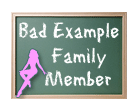Korea
Well, I have finally put some pictures up. And if you haven't yet read part one and part two of my trip, feel free to do so.
Two of the pictures need some explanation, the first is at my mom's gravesite.
As I said before, my "harmony" (grandmother in Korean) was murdered outside her home by North Korean soldiers there to take my grandfather and aunts and uncles away. As they had secretly fled in the night, my grandmother paid the price. She was buried in the traditional mound grave standing upright in a wooden coffin on a hilly outcrop overlooking the home in which she lived. Beside her graves are the graves of the neighbor boy's mother and father, executed in much the same fashion.
My aunt made the almost three day trek out of the valley with my mom on her back in 1951 so my mother has never seen my grandmother's grave. About 10-15 years ago, they opened the Cheorwon Valley to those who were born there. My aunt and uncle returned and went to their mother's grave where they cleared the area and put in a gravestone.
Koreans believe that you must care for the graves of your parents and ancestors or bad things will befall your family. So many older Koreans fear that the reason they have suffered is because they were unable to care for the graves of their parents and ancestors. Being able to go "home" as it were, was a life-long dream for my mom, aunt and uncle. Only now, after some 54 years did my mom get to finally return home.
Which brings me to the gravesites which we cleared. In Korea, non-christinas, and some christians too, celebrate Jesa. It is the honoring or worship of one's ancestors. Once a year, men clear away the brush and debris at ancestral gravesites (we visited three which were each over 500 years old). My family is descended from a Late Goreyo King but that King's remains are trapped within the barbed wire of the DMZ and no one can go there, so we cleaned the graves of the later ancestors.
Women did not take part in this cleaning. Nor did they take part in the ancestral Jesa ceremony (they can now). See, in older Korean culture, a family was represented by its men. The women were not important to the family name.
Anyway, at Jesa, the men dress all in white, make offerings and chants and other ceremonial trappings to show their honor of their ancestors in their home, and then they march to the gravesite to chant, offer food and drink and piles of stones in honor. Also at Jesa, entire families visit the gravesites of their parents, they have a picnic and take small offerings of rice cakes to their parents.
Even though I am a woman, because I showed interest in my family history, the Chairman of our family (every traditionally upper-class family had one) invited us to participate so that he could point out the significance of each site.
The one in the picture is on a military base (on which non-military people are not allowed, except at Jesa and on which women are never allowed but they apparently made an exception because they didn't shoot us). We were surrounded by armed boys while we worked, and had to walk over a mine field to get to one section of our familial gravesites. It was an experience I shall not soon forget.
The gravesite itself is in three mounds. The middle one was originally taller than the other two as the man was buried there between his two wives. His grave has since sunk lower than the other two and the tale is that his wives had wrapped their arms around him and were holding him close for all eternity. Neat.
In Korea, families keep a book of names of the men born to the family, and if you are a male child, your children's names will appear in the book as well. It was kept from the King we are decended from. Anyway, my mother's name appears in the book, and my grandfather and great grandfather all the way up to this King. This book had recently been printed (the only time in almost 1000 years) because of a dispute in the family. One extra copy was printed and it was given to me during my visit! While my name isn't in the book, my mother's is, and I can forever tell people my family line is the Ubong-Kim's. (oh and on my grandmother's side, her Kim's were descended from a Shilla King so, I'm technically royalty, I wonder if that rubs out the redneck on my dad's side . . .)
Stay tuned for more pictures and stuff . . .
Posted by Oddybobo at September 28, 2005 09:16 AM
| TrackBack



